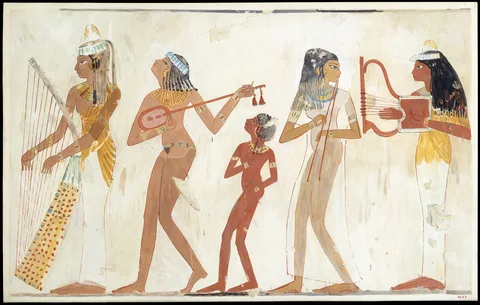
Introduction: Ancient Egyptian fashion,
Ancient Egyptian fashion was more than a mere expression of clothing; it was a cultural tapestry intricately woven into the very fabric of society’s ancient Egyptian fashion. As we delve into the enigmatic world of Ancient Egyptian fashion, we uncover not just garments but a profound language of elegance and mystique. The attire of the ancient Egyptians transcended mere practicality; it was a reflection of their beliefs, and societal structures, and a testament to the sophistication of a civilization that thrived along the banks of the NileAncient Egyptian fashion,.
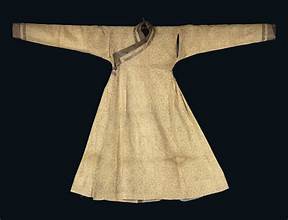
In ancient Egyptian fashion, Elegance was not just a style but an ethos embedded in every thread and fold. The garments worn by the ancient Egyptians weren’t merely practical coverings; they were canvases that depicted stories of tradition, hierarchy, and divine connections. The mystique associated with Ancient Egyptian fashion goes beyond the aesthetics; it’s a glimpse into the spiritual and symbolic significance woven into the very fabric of their existence.
In this exploration of Ancient Egyptian fashion, we embark on a journey through time, peeling back the layers of linen and silk to reveal a world where style was a silent language, speaking volumes about a civilization that continues to captivate our imagination. Join us as we unravel the threads of elegance and mystique that adorned the ancient Egyptians, transcending time and leaving an indelible mark on the annals of fashion history.
- The Foundations
In the sprawling tapestry of Ancient Egyptian fashion, the very foundations lie in the meticulous choice of materials and fabrics that adorned the inhabitants of the Nile Valley. As we peer into the annals of history, we find that the garments worn by the ancient Egyptians were not only a testament to their craftsmanship but also a reflection of the geographical and cultural milieu that surrounded them.

Materials and Fabrics:
Ancient Egyptians were adept at utilizing the abundant resources bestowed upon them by the Nile Delta. Linen, derived from the flax plant, emerged as the primary fabric for clothing. The cultivation and transformation of linen into garments were not merely utilitarian tasks but elevated to an art form. The lightweight, breathable nature of linen made it an ideal choice in the arid climate, ensuring comfort in the scorching Egyptian sun.
Beyond linen, the elite classes indulged in the luxury of fine imported fabrics such as silk. These rare and exotic materials not only served as markers of social status but also showcased the Egyptians’ prowess in trade and their keen eye for the exquisite.
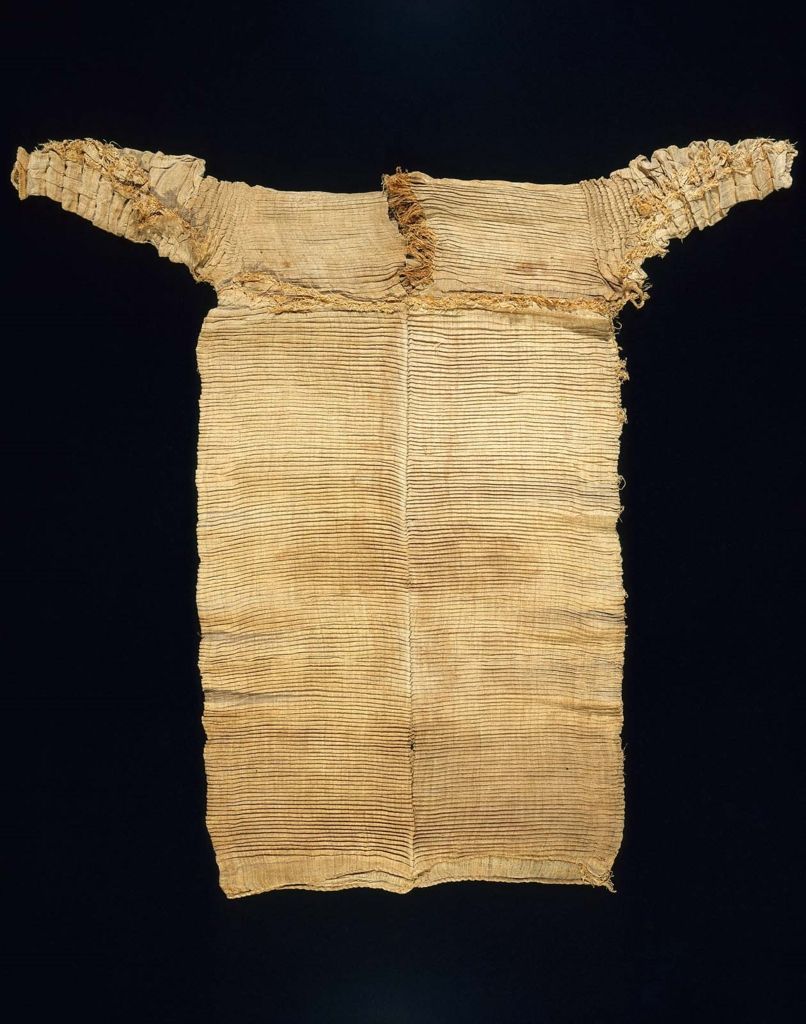
Significance of Color and Patterns:
Color was not merely a visual aesthetic in Ancient Egyptian fashion; it was a language in itself, communicating social status, religious beliefs, and even protection against malevolent forces. White, the color of purity and cleanliness, dominated everyday wear. Priests often donned white linen to symbolize their ritual purity, while the general populace embraced it for its reflective properties under the blazing sun.
In contrast, vibrant colors like red, blue, and green were reserved for special occasions and the elite. Each hue held symbolic significance; red represented vitality and life, blue symbolized the heavens and the Nile, and green was associated with fertility and rebirth.
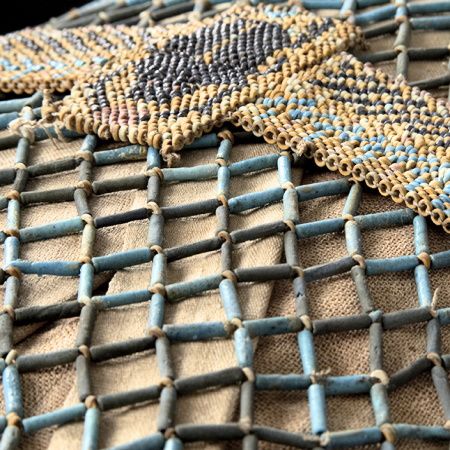
Patterns, meticulously woven into the fabric, carried their own stories. Geometric shapes, animals, and symbols like the ankh and the Eye of Horus adorned garments, infusing them with a deeper meaning. These patterns were not only expressions of artistic flair but also served as conduits for cultural narratives and religious beliefs.
In essence, the foundations of Ancient Egyptian fashion were laid in the careful selection of materials and the artful incorporation of colors and patterns. The garments were not just coverings; they were canvases that painted a vivid picture of a civilization deeply attuned to the natural world, the divine, and the intricate dance of daily life along the banks of the sacred Nile.
Styles and Trends of Ancient Egyptian Clothing
In the realm of Ancient Egyptian fashion, the intricacies of clothing extended far beyond mere garments; they were a visual narrative of societal hierarchy and a dance between practicality and symbolism. As we explore the diverse styles and trends that graced the banks of the Nile, we uncover a civilization that wove its social structure into the very fabric of its attire.
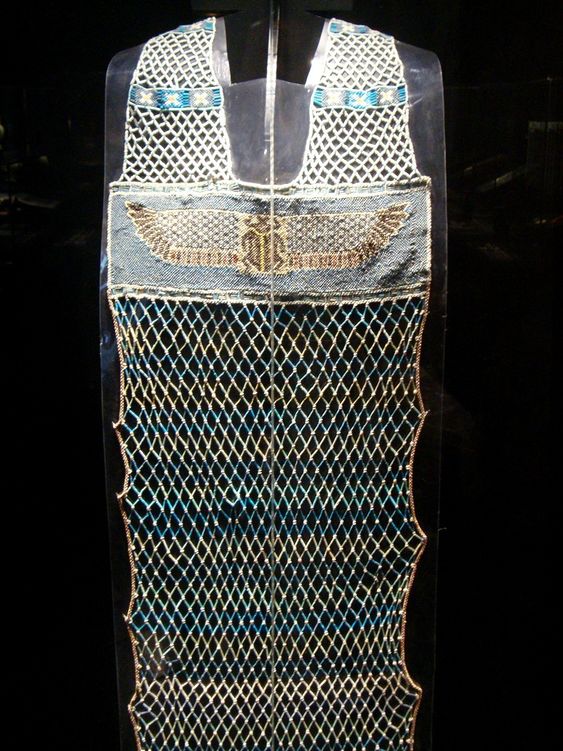
Clothing Styles Based on Social Status:
Social status in ancient Egypt was not only defined by birthright but also meticulously reflected in the clothing one wore. The distinctions were not subtle; they were vividly expressed through the style, quality, and adornments of garments.
At the zenith of the societal pyramid were the pharaohs, adorned in regal garments that transcended everyday wear. Linen, embellished with gold and precious gems, draped the rulers in garments that exuded divine authority. The elite classes followed suit, indulging in fine linens and ornate jewelry, their clothing serving as a visual proclamation of their privileged position.
Commoners, on the other hand, embraced simpler attire. Plain linen, devoid of elaborate embellishments, was the hallmark of the working class. Yet, even within this simplicity, there existed nuances in style that denoted specific trades and occupations. The weaver wore garments indicative of their craft, the farmer donned attire suitable for toiling the fertile fields, and the scribe exhibited a modest elegance befitting their intellectual pursuits.
Influence of Climate on Clothing Choices:
The scorching heat of the Egyptian sun played a pivotal role in shaping the sartorial choices of the ancient Egyptians. The climate necessitated clothing that offered not only protection from the relentless sun but also ensured comfort amid the arid landscape.
Men and women alike favored lightweight, loose-fitting garments to allow ventilation and ease of movement. The ubiquitous use of linen, with its breathable qualities, was a pragmatic response to the climatic challenges. Flowing robes, kilts, and tunics dominated everyday wear, allowing the wearer to navigate the demands of both work and climate seamlessly.

Headwear also became a crucial element in climate-responsive fashion. The iconic headdresses, such as the Nemes and Khat, not only shielded individuals from the sun but also served as symbols of status. The intricacies of headdress design often denoted specific roles or affiliations within the societal hierarchy.
As we navigate the styles and trends of Ancient Egyptian clothing, we uncover a civilization that ingeniously merged societal distinctions with climatic necessities. The result was a tapestry of attire that not only spoke volumes about individual roles but also resonated with the practical wisdom of a civilization intricately attuned to the rhythm of the natural world.
Accessories and Adornments in Ancient Egyptian Fashion
In the grandeur of Ancient Egyptian fashion, attire was not complete without the meticulous addition of accessories and adornments. These embellishments went beyond mere aesthetic appeal; they were laden with symbolism, reflecting the profound beliefs, social status, and divine connections that characterized this ancient civilization.
Use of Jewelry and Accessories:
Jewelry in Ancient Egypt was more than ornamentation; it was a language of status, spirituality, and personal expression. The Egyptians were masterful artisans, crafting intricate pieces from materials like gold, silver, semi-precious stones, and faience.
1. Collars and Necklaces:
Adorning the neck with elaborate collars and necklaces was a common practice among both men and women. These pieces ranged from simple beaded strings to intricately woven collars, often featuring amulets and symbolic charms. The use of such accessories extended beyond aesthetics, with each piece holding a specific significance in the wearer’s life, whether for protection, good fortune, or religious devotion.
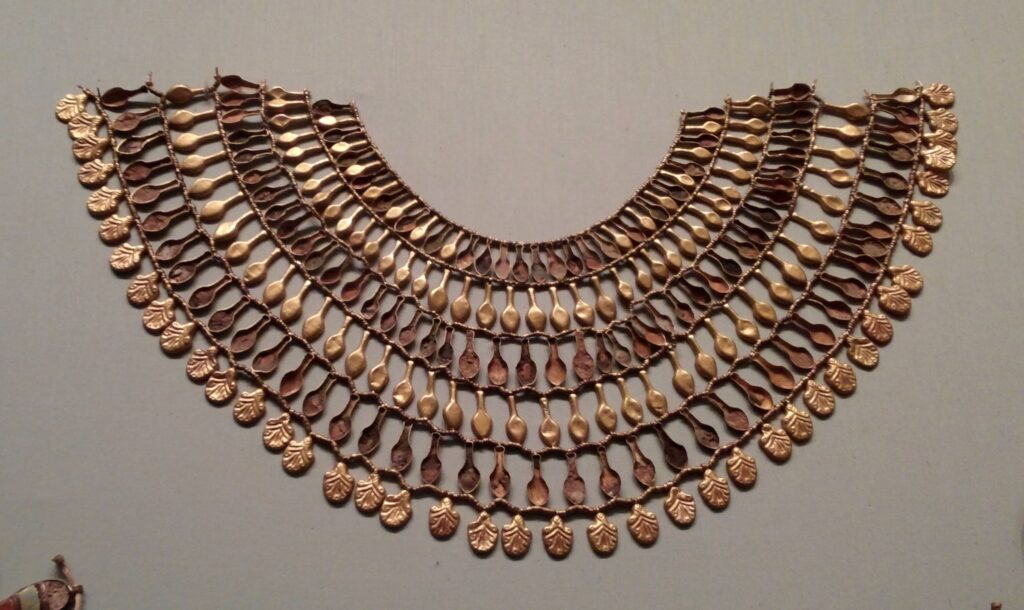
2. Bracelets and Anklets:
Wrist and ankle adornments, crafted with meticulous detail, were popular among the ancient Egyptians. Bracelets, often worn in pairs, were made from a variety of materials, including metal, leather, and beads. Anklets, too, held cultural significance, with jingling sounds believed to ward off evil spirits. These accessories not only added a musical quality to the wearer’s movements but also served as statements of style and identity.

3. Rings and Earrings:
Rings adorned fingers, while earrings adorned the ears, and both were chosen with care. Signet rings, engraved with personal symbols, served as seals of authority and identity. Earrings, often featuring symbolic motifs like the Udjat eye, expressed protection and warding off evil. The choice of these accessories reflected not only personal taste but also societal roles and beliefs.

Symbolism Behind Accessories:
The symbolism woven into Ancient Egyptian accessories transcended mere aesthetics, delving into the realms of spirituality, protection, and cultural identity.
1. Amulets:
Amulets, small charms imbued with protective powers, were commonly worn as part of jewelry. Symbols such as the Ankh, the Eye of Horus, and the Scarab beetle carried deep spiritual significance, providing the wearer with blessings of protection, life, and good fortune.
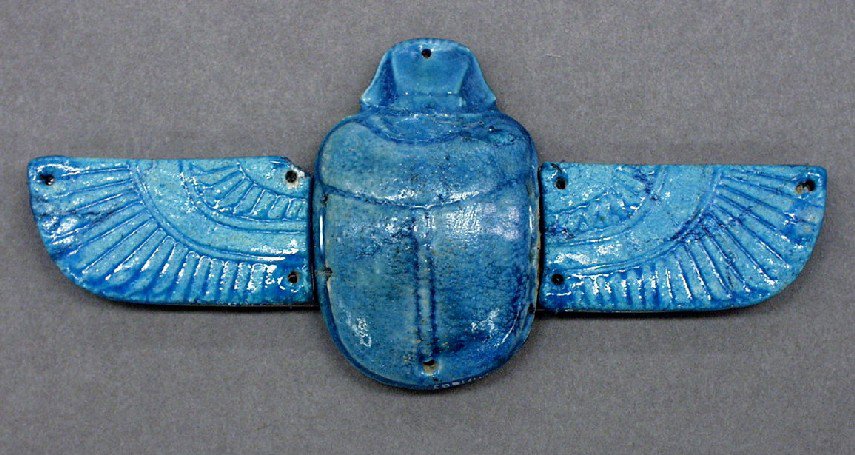
2. Udjat Eye:
The Udjat eye, commonly known as the Eye of Horus, was a pervasive symbol in Ancient Egyptian jewelry. Representing the eye of the falcon-headed god Horus, it was a potent symbol of protection, royal power, and good health.
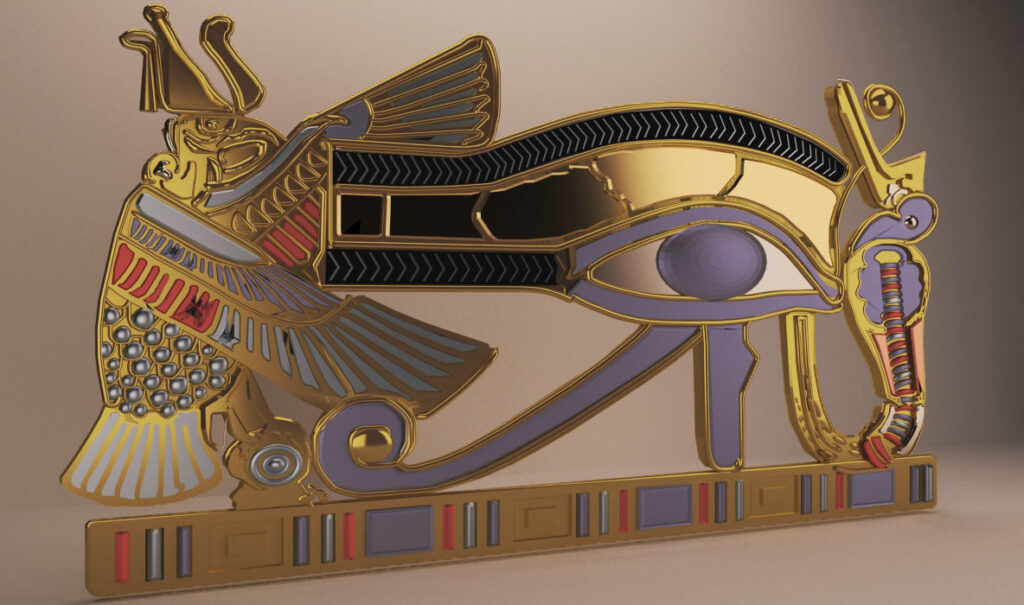
3. Scarab Beetle:
The scarab beetle, a symbol of regeneration and protection, adorned many pieces of jewelry. Worn as a pendant or engraved on amulets, it reflected the Egyptians’ belief in the cyclical nature of life and the protective qualities associated with this revered insect.
In the intricate world of Ancient Egyptian fashion, accessories were not mere embellishments; they were conduits of cultural expression, personal identity, and a tangible connection to the divine. Each piece spoke volumes, weaving a narrative that transcended time and left an indelible mark on the legacy of Egyptian adornment.
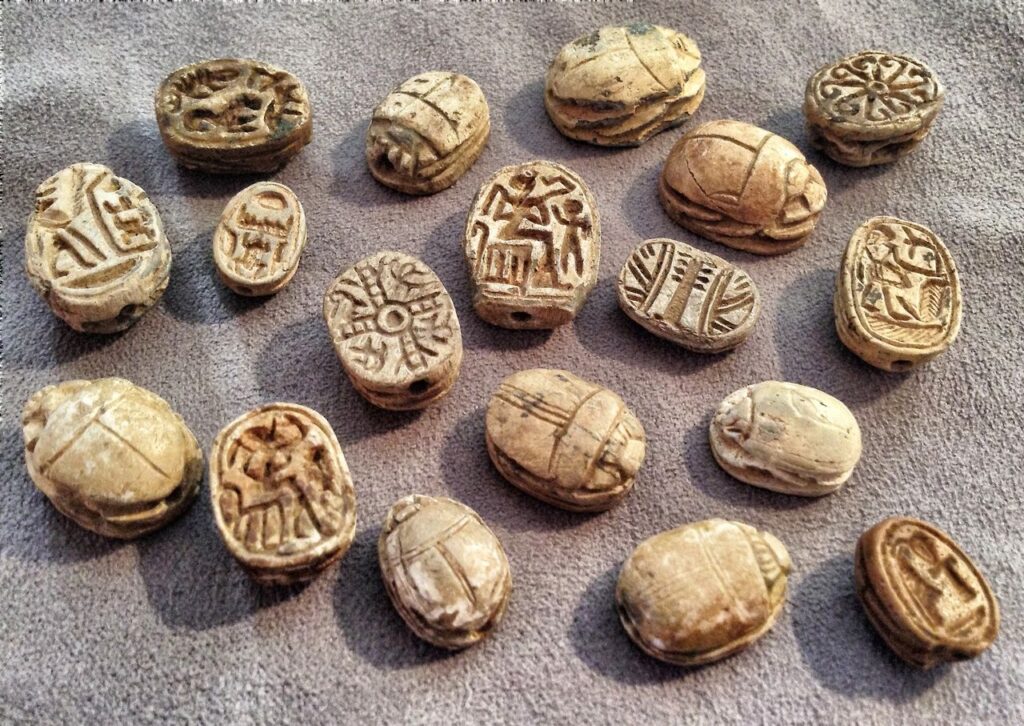
The Role of Fashion in Ancient Egyptian Society
Fashion in ancient Egypt was not just a matter of personal style; it was a visual language that conveyed one’s social standing, profession, and spiritual beliefs. In the intricate tapestry of Egyptian society, clothing served as a silent yet powerful communicator, weaving together threads of tradition, symbolism, and societal hierarchy.
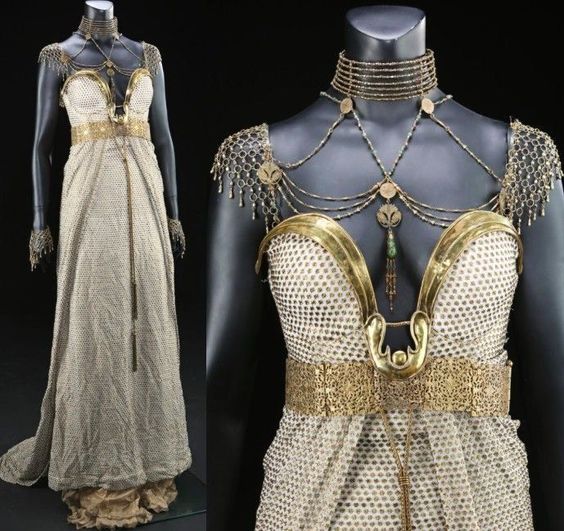
Clothing Reflecting Social Status and Profession:
In the stratified society along the Nile, the garments one wore spoke volumes about their place in the social hierarchy. The distinctions in clothing were pronounced, creating a visual narrative that could be deciphered by a keen observer.
1. Royal Attire:
At the apex of the social pyramid, pharaohs adorned themselves in garments that transcended earthly materials. Linens interwoven with gold, precious gems, and intricate embroidery were reserved for the rulers. The intricacy of their attire not only symbolized their divine authority but also served as a visual proclamation of their exalted status.
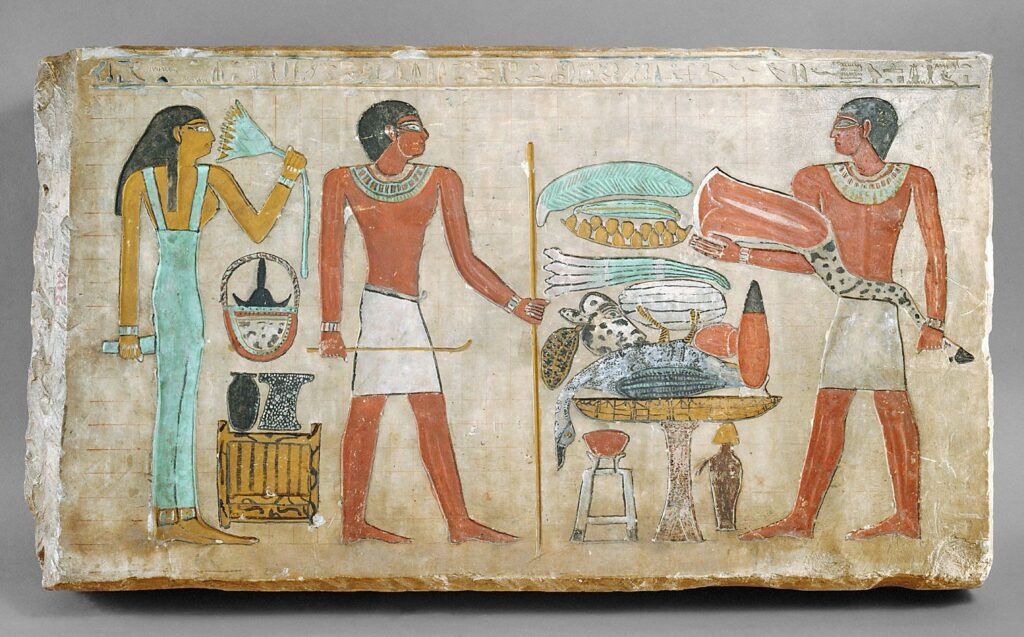
2. Elite Classes:
Beneath the pharaohs, the elite classes embraced luxurious fabrics and ornate accessories. Fine linens, imported silks, and elaborate jewelry were the hallmarks of their attire. The quality of materials and the intricacy of adornments were not only indicators of wealth but also defined their place within the social hierarchy.

3. Commoners and Workers:
For the commoners and workers, simplicity prevailed. Plain linen garments, though lacking the opulence of the elite, were functional and well-suited for the demands of everyday life. Distinctions in clothing among commoners often reflected one’s profession, with weavers, farmers, and scribes each donning attire indicative of their respective roles.
Role of Fashion in Religious and Ceremonial Contexts:
Beyond its role in societal stratification, fashion in ancient Egypt played a pivotal role in religious and ceremonial contexts. Attire became a tangible expression of devotion, a conduit for connecting with the divine, and a means of participating in rituals that shaped the spiritual landscape of the civilization.
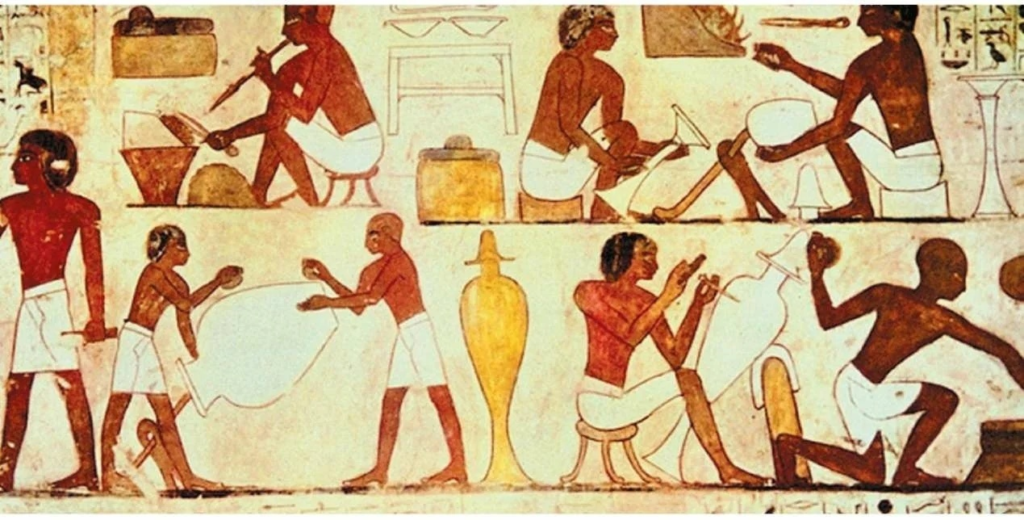
1. Ritualistic Adornments:
Priests and priestesses, clad in garments symbolizing purity, played a central role in religious ceremonies. White linen, intricately woven with religious symbols, served as a visual representation of their spiritual duties. Adornments such as the leopard-skin cloak were reserved for high-ranking priests, signifying their connection to specific deities.
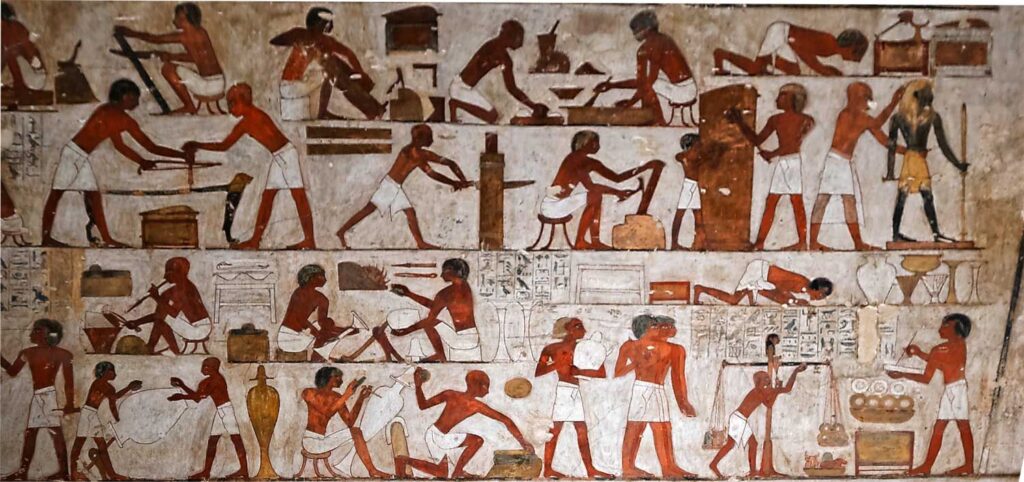
2. Ritual Garb and Symbolism:
Ceremonial attire extended beyond priests to encompass the broader populace during religious festivals. Egyptians participated in these events adorned in garments reflective of the deity being honored. The symbolic use of color, patterns, and specific accessories created a collective visual expression of reverence and participation in the sacred.
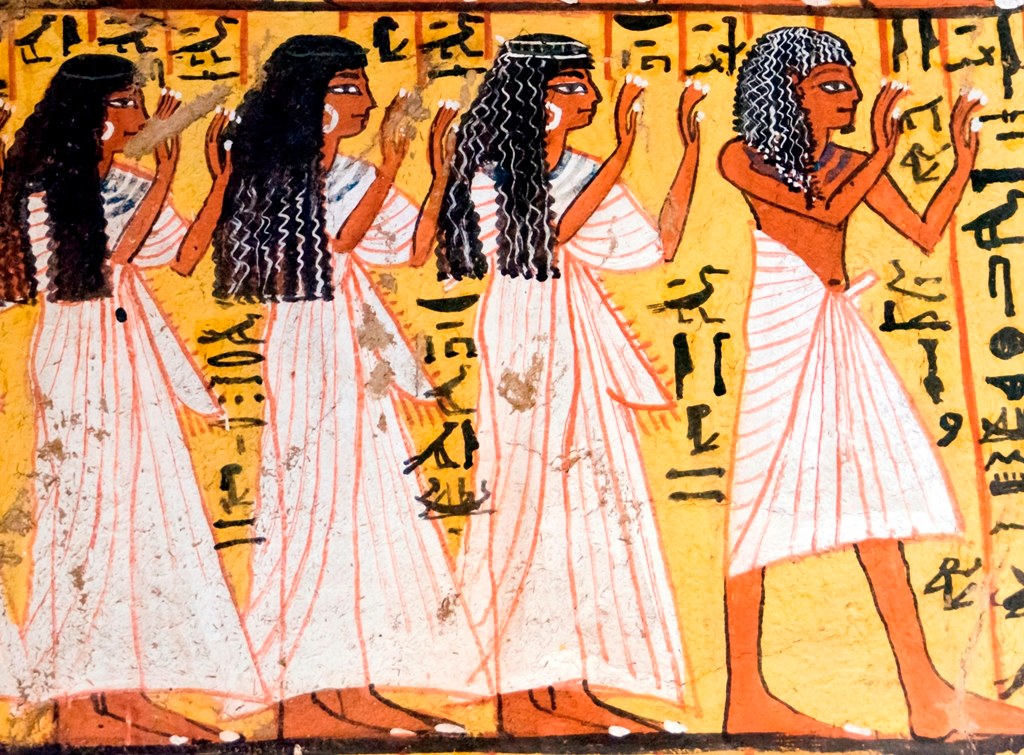
Fashion in ancient Egyptian society was, therefore, a multifaceted tapestry, intricately woven into the fabric of daily life, social structure, and spiritual practices. Whether worn in the halls of the palace, the fields of labor, or the sanctuaries of the gods, clothing in ancient Egypt was more than a covering; it was a vibrant language that spoke of a civilization’s identity, aspirations, and unwavering connection to the divine.
Influential Figures in Ancient Egyptian Fashion
Within the grandeur of Ancient Egyptian civilization, certain historical figures emerged not only for their deeds but also for their distinctive and influential sense of fashion. These individuals, often in positions of power and influence, left an indelible mark on the sartorial landscape of their time, shaping trends and setting standards that resonated across the Nile.

Notable Historical Figures with Distinctive Fashion:
1. Cleopatra VII:
Cleopatra VII, the last pharaoh of ancient Egypt, was not only renowned for her political acumen but also for her captivating sense of style. She skillfully blended Egyptian and Hellenistic fashion, creating a distinctive look that combined opulence with cultural fusion. Cleopatra’s use of lavish fabrics, intricate jewelry, and elaborate hairstyles set her apart as a fashion icon whose influence extended beyond the borders of Egypt.
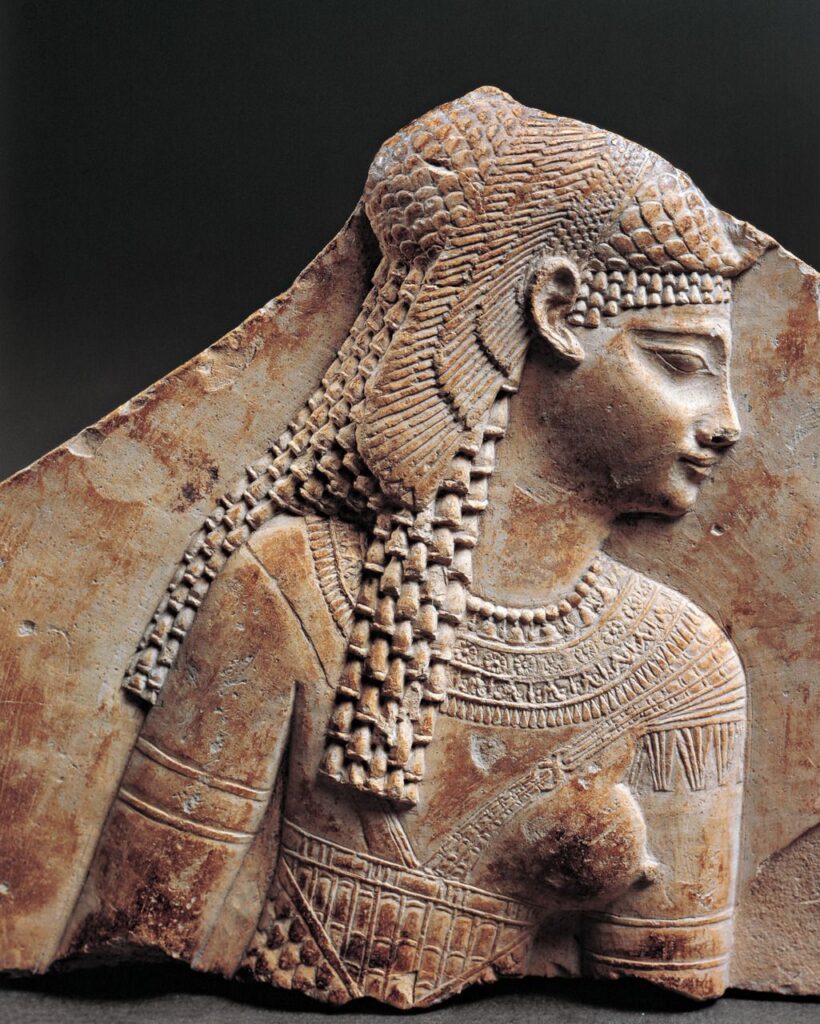
2. Nefertiti:
Nefertiti, the queen and consort of Pharaoh Akhenaten, is celebrated for her timeless beauty and innovative fashion choices. She popularized the Nemes headdress, characterized by its iconic striped pattern, and adorned herself with elaborate collars and jewelry. Nefertiti’s fashion choices not only reflected her status but also set a precedent for royal elegance that resonated through subsequent eras.
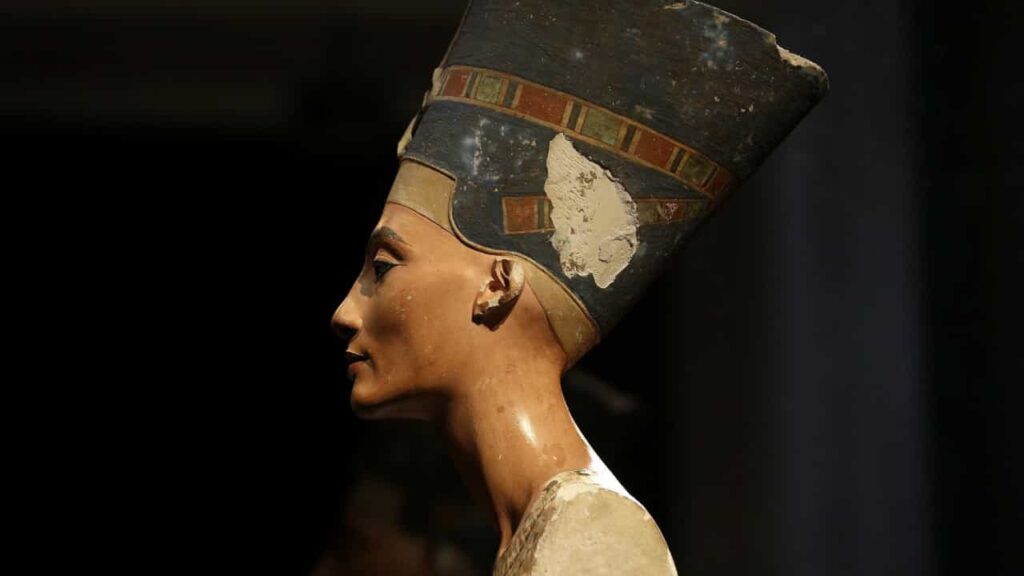
3. Amenhotep III:
Pharaoh Amenhotep III, often referred to as the “Sun King,” was a patron of the arts and fashion. His reign witnessed a proliferation of luxurious garments, featuring intricate embroidery and the use of fine materials. Amenhotep III’s wardrobe choices not only reflected his opulence but also contributed to the flourishing of artistic expression in the realm of Egyptian fashion.

Royal Influence on Fashion Trends:
1. Extravagant Materials:
Royal figures, especially pharaohs and queens, were instrumental in popularizing the use of extravagant materials in fashion. The use of gold-threaded linen, silk, and imported fabrics became synonymous with regal attire. The elite classes emulated these choices, fostering a trend where the quality of materials became a status symbol.
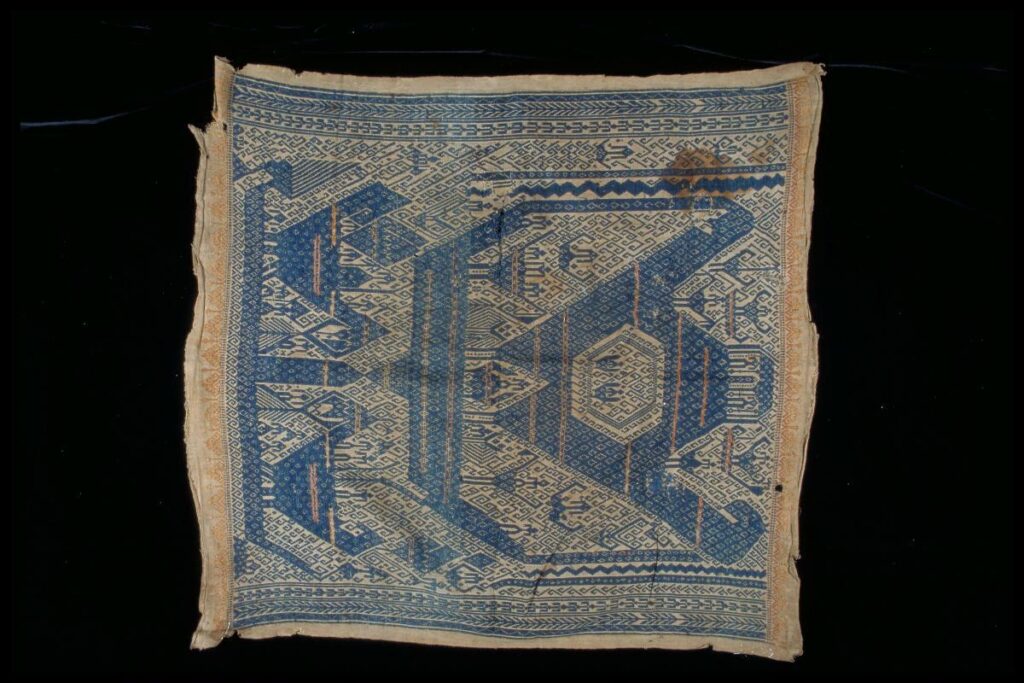
2. Symbolic Adornments:
Royal figures incorporated symbolic adornments into their attire, and these symbols often held deep cultural and religious significance. The adoption of such symbols by the elite and commoners alike became a way of aligning oneself with the divine and expressing allegiance to the ruling powers. Symbols like the Ankh, the Eye of Horus, and the Scarab beetle proliferated as fashion statements.

3. Cultural Fusion:
Certain royal figures, particularly during periods of cultural exchange, introduced elements from foreign lands into Egyptian fashion. Cleopatra’s integration of Hellenistic styles, for example, showcased how royal figures could shape fashion trends by blending influences from diverse sources.
In the realm of Ancient Egyptian fashion, influential figures were not merely rulers; they were trendsetters whose choices reverberated through society, shaping the very fabric of what was considered stylish and culturally significant. The garments they wore became not only a reflection of their individual taste but also a cultural canvas upon which the identity of an era was painted.
The Elegance Rediscovered: Modern Interpretations of Ancient Egyptian Fashion
In the contemporary world, the allure of Ancient Egyptian fashion has transcended the confines of history, finding new life in the realms of modern design and haute couture. As designers and fashion enthusiasts rediscover the elegance of the Nile’s bygone era, elements of Ancient Egyptian fashion are seamlessly woven into the tapestry of today’s styles, paying homage to a civilization that continues to captivate the imagination.
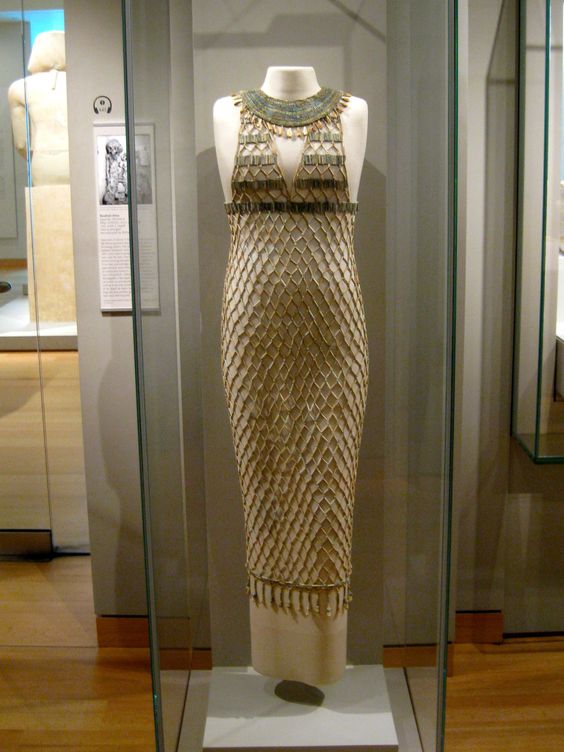
Modern Interpretations:
1. Runway Resurrections:
Runways around the globe have witnessed the resurrection of Ancient Egyptian aesthetics. Designers draw inspiration from the iconic silhouettes, symbols, and color palettes that defined the fashion of pharaohs and queens. From flowing linen robes reminiscent of ancient tunics to modern interpretations of headdresses, the runway becomes a canvas for the revival of timeless elegance.
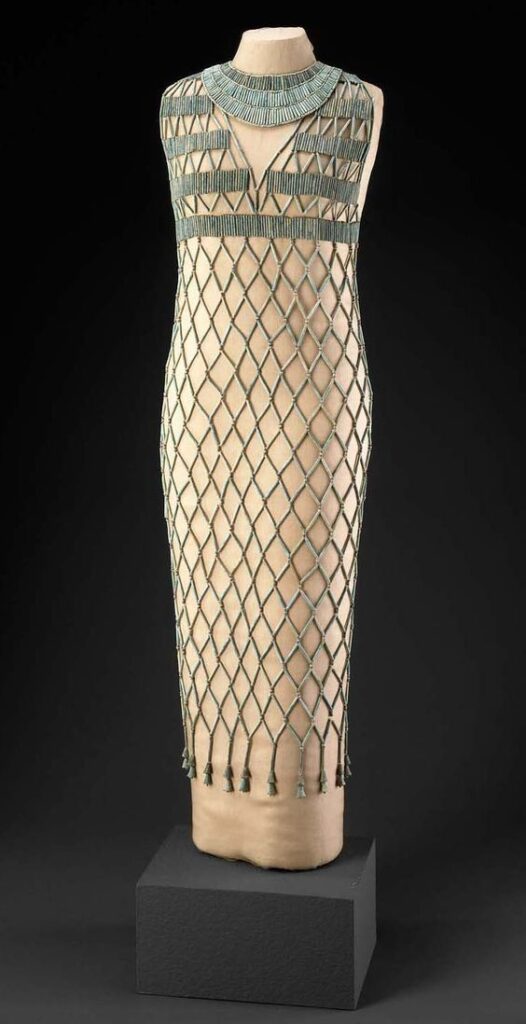
2. Symbolic Motifs:
Ancient Egyptian symbols, once etched onto amulets and woven into garments for their protective qualities, find new life in contemporary fashion. Ankh pendants, Udjat eyes, and scarab beetle motifs adorn accessories, creating a fusion of historical symbolism and modern style. These motifs not only evoke a sense of mystique but also serve as nods to the rich cultural heritage of Ancient Egypt.
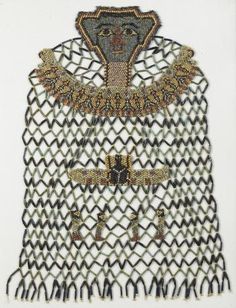
3. High Fashion Homage:
Luxury fashion houses pay homage to the opulence of Ancient Egyptian attire. Intricate beadwork, gold embellishments, and luxurious fabrics harken back to the regal splendor of pharaohs and queens. Haute couture collections often feature gowns and accessories that echo the grandeur of the royal wardrobes, creating a seamless blend of ancient opulence and contemporary elegance.
Influence on Contemporary Design:
1. Minimalist Linens:
The timeless appeal of linen, a staple in Ancient Egyptian fashion, resonates in modern minimalist design. Designers incorporate lightweight, breathable linen into contemporary silhouettes, creating pieces that evoke the simplicity and comfort of ancient attire. The versatility of linen extends from casual wear to high fashion, embodying the enduring elegance of the Nile’s legacy.
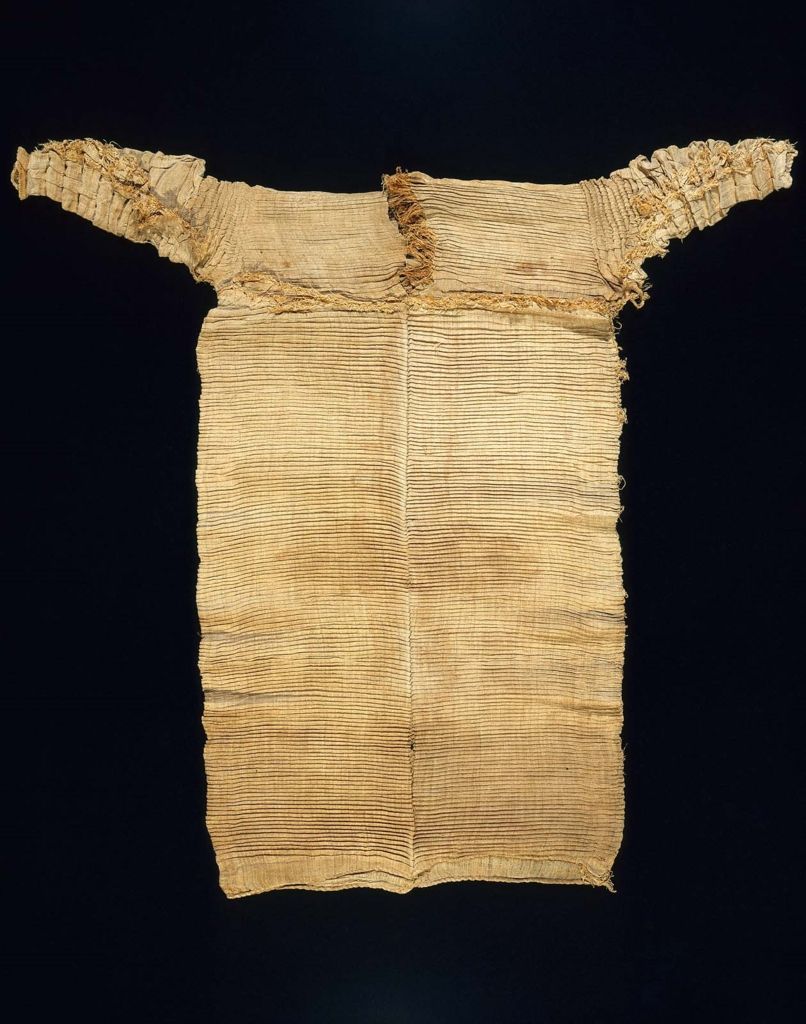
2. Statement Headwear:
The iconic headdresses of Ancient Egypt, such as the Nemes and Khat, inspire contemporary statement headwear. Designers create modern interpretations of these regal crowns, infusing them with a touch of extravagance suitable for red carpets and high-profile events. The influence of these headpieces extends beyond fashion, becoming emblematic of empowerment and individual expression.
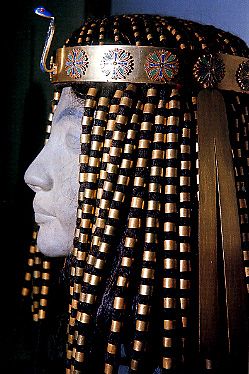
3. Bold Color Palettes:
The vibrant color palette of Ancient Egyptian fashion, with hues like deep blues, rich reds, and golden yellows, permeates modern design. Contemporary designers embrace bold color choices that reflect the vivacity and symbolism associated with the garments worn by the ancient Egyptians. These colors not only make a visual impact but also evoke a sense of connection to a storied past.
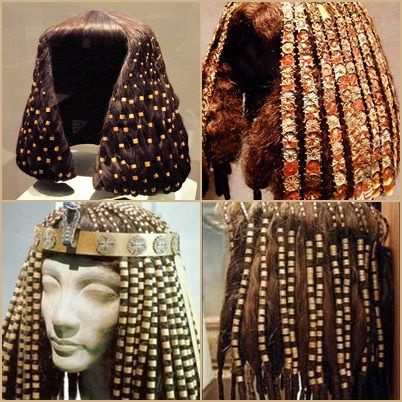
In the tapestry of modern fashion, the elegance of Ancient Egyptian attire is not a relic of the past but a living inspiration that continues to shape design aesthetics. From runway showcases to everyday wardrobes, the influence of Ancient Egyptian fashion is a testament to its enduring appeal and the timeless elegance that transcends millennia. The Nile’s legacy lives on, woven into the very fabric of contemporary style.
Conclusion:
In the exploration of Ancient Egyptian fashion, we have unraveled a tapestry of elegance, symbolism, and cultural richness that continues to weave its influence into the fabric of the modern world. From the foundations laid in meticulous material choices and the symbolism inherent in color and patterns to the distinct styles reflecting social status and the nuanced influence of climate on clothing choices, Ancient Egyptian fashion emerges as a vibrant reflection of a civilization deeply attuned to the rhythms of life along the Nile.
Noteworthy figures like Cleopatra, Nefertiti, and Amenhotep III stand as eternal icons, not only for their political prowess but for their distinctive and influential sense of style. Their fashion choices, rich in opulence and symbolic motifs, have transcended time, inspiring modern interpretations on runways and in high fashion.
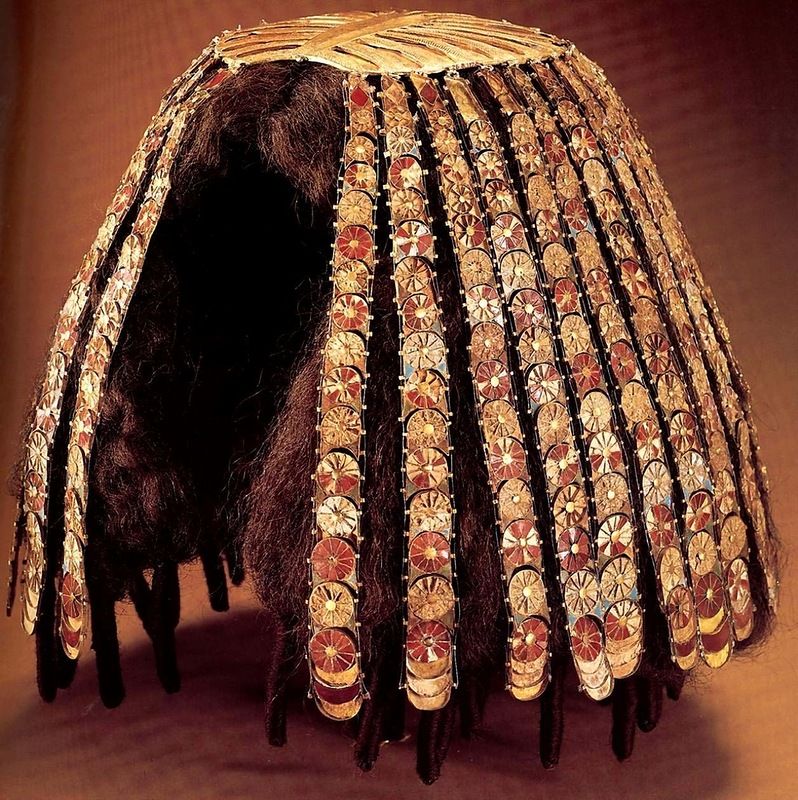
As we delve into the role of fashion in Ancient Egyptian society, we witness clothing as a silent yet powerful communicator, shaping narratives of social hierarchy, professional identity, and spiritual devotion. The regality of royal figures, the elegance of priestly vestments, and the simplicity of commoners’ attire collectively contribute to a rich cultural tapestry that remains relevant in the study of historical fashion.
The influence of ancient Egyptian fashion doesn’t confine itself to museums and history books; it strides confidently into contemporary design. Runways showcase resurrections of iconic silhouettes, symbolic motifs find new life in accessories, and luxury fashion houses pay homage to the opulence of pharaohs and queens. Modern designers seamlessly blend elements of ancient Egyptian fashion into minimalist linens, statement headwear, and bold color palettes, creating a bridge between the ancient and the avant-garde.
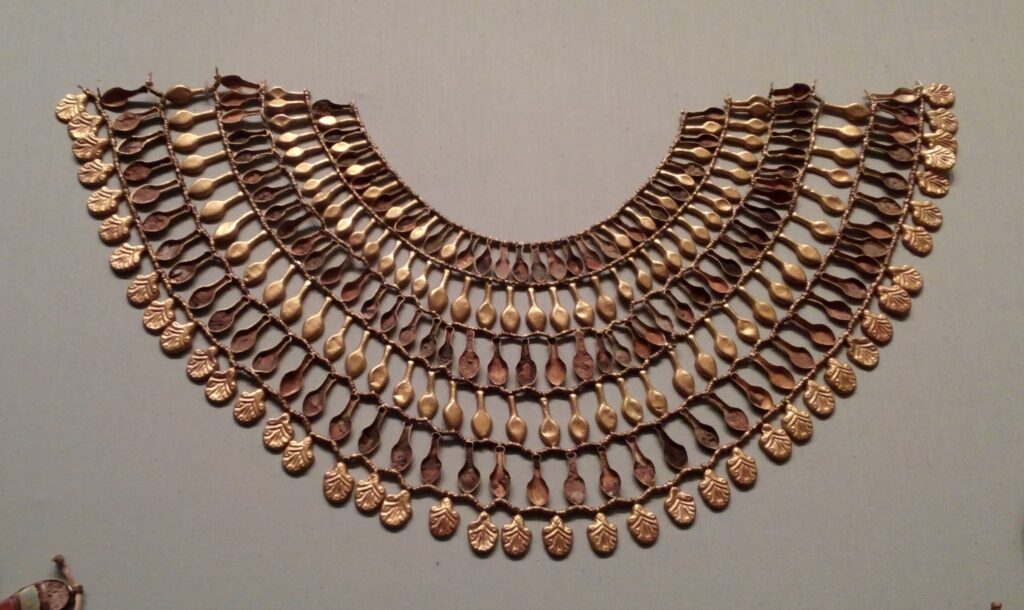
In conclusion, the lasting impact of Ancient Egyptian fashion on the modern world is undeniable. It’s not merely a historical relic; it’s a living legacy that continues to shape our perceptions of elegance, symbolism, and cultural identity. As we don garments inspired by the banks of the Nile, we become part of a continuum, connecting the threads of time and fashioning a narrative that echoes the enduring allure of ancient Egyptian style—a timeless elegance that transcends the ages.
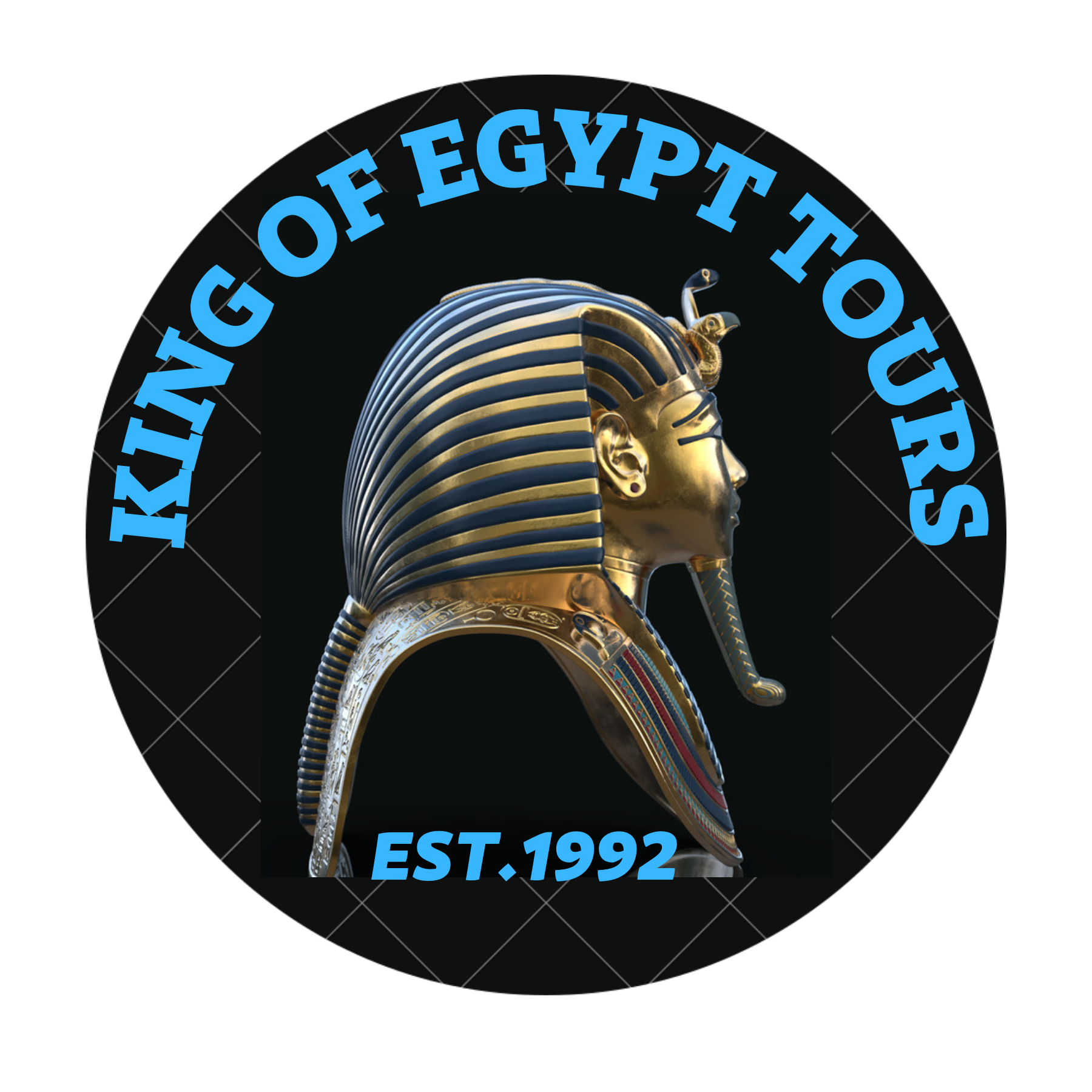
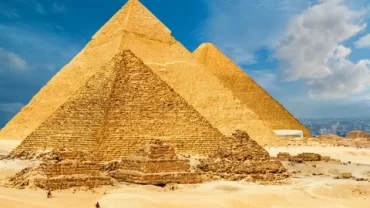

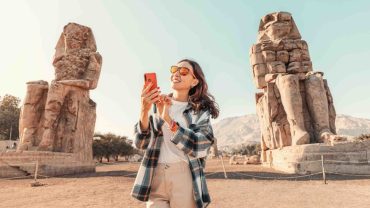

Comment (0)